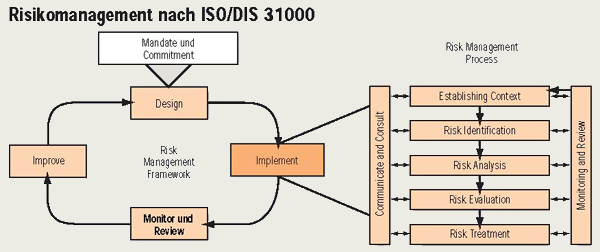Preventive Risk Management
 Risk is being defined by the different scientific disciplines in many different ways.
What they all have in common, however, is the definition of ‚Äěrisk‚Äú as a description of an event with the potential
of related negative consequences once they materialise.
Risk is being defined by the different scientific disciplines in many different ways.
What they all have in common, however, is the definition of ‚Äěrisk‚Äú as a description of an event with the potential
of related negative consequences once they materialise.
Risk is regarded as a function of the probability of an event and its consequences on the outcome of defined targets or objectives.
Environmental Scientists and safety engineers are defining risks as the mathematical product of Severity and Likelihood of an event:
Risk = Severity  x  Likelihood
This definition, however, is only restrictedly suitable for most of the production oriented industry. Therefore, the reader is referred to the following CEFIC publication, which is using the terms ‚Äěhazard‚Äú and ‚Äěexposure‚Äú instead of severity and likelihood:
Link to Risk Definition by CEFIC: Hazard & Risk (© Cefic)
This graph explains (preventive) risk management according to ISO 31000. The main components of the risk management process comprise risk identification and analysis / evaluation, risk treatment and implementation of measures. Monitoring and continuous improvement are completing the process cycle. Very often, however, risks cannot be eliminated completely. Instead, residual risks remain that may require additional reactive risk management steps.

|
As part of its service portfolio Dr. Bellof Consulting
is offering consultancy, coaching, moderation or the entire comprehensive
planning and implementation of your risk management project on-site ‚Äď fully
customized to meet your needs and preferences.
If you are interested in this service, please complete the Feedback Form. |


